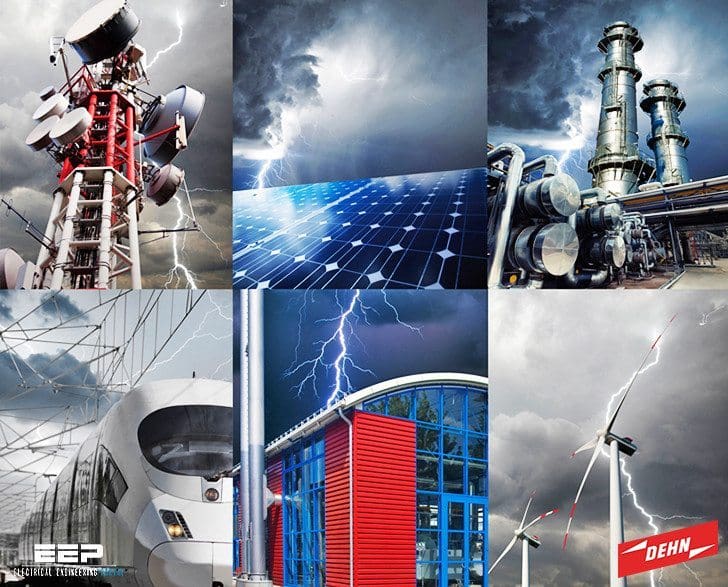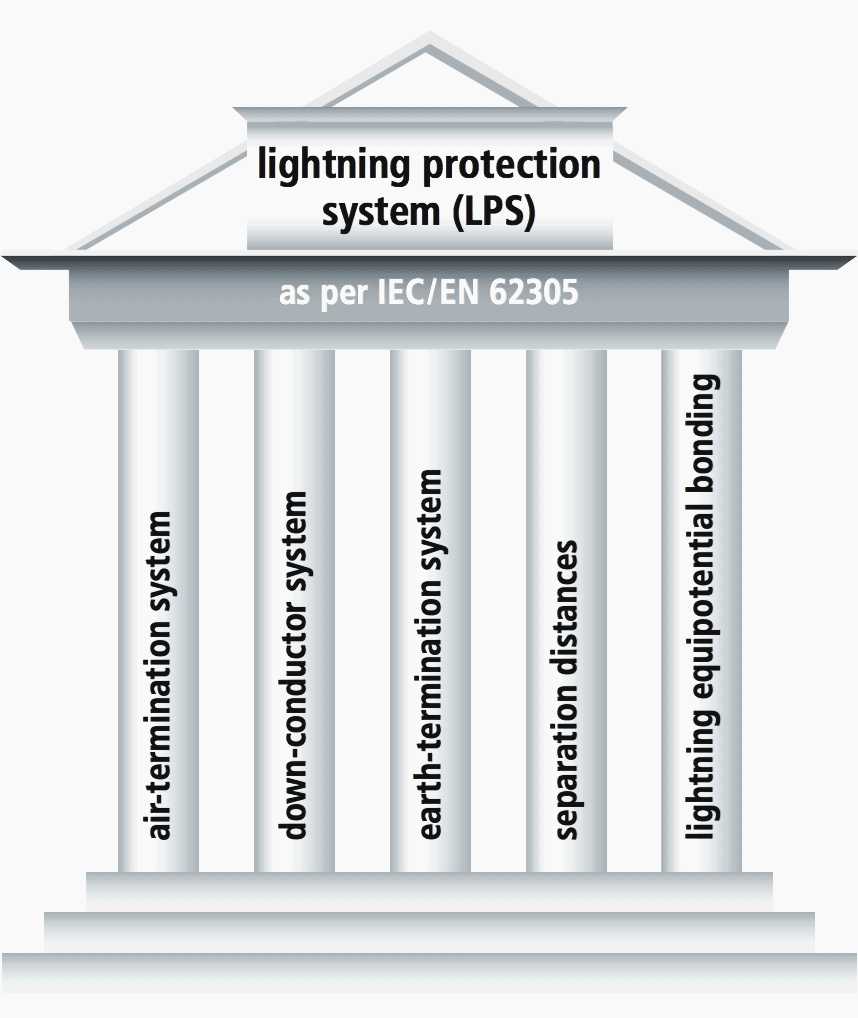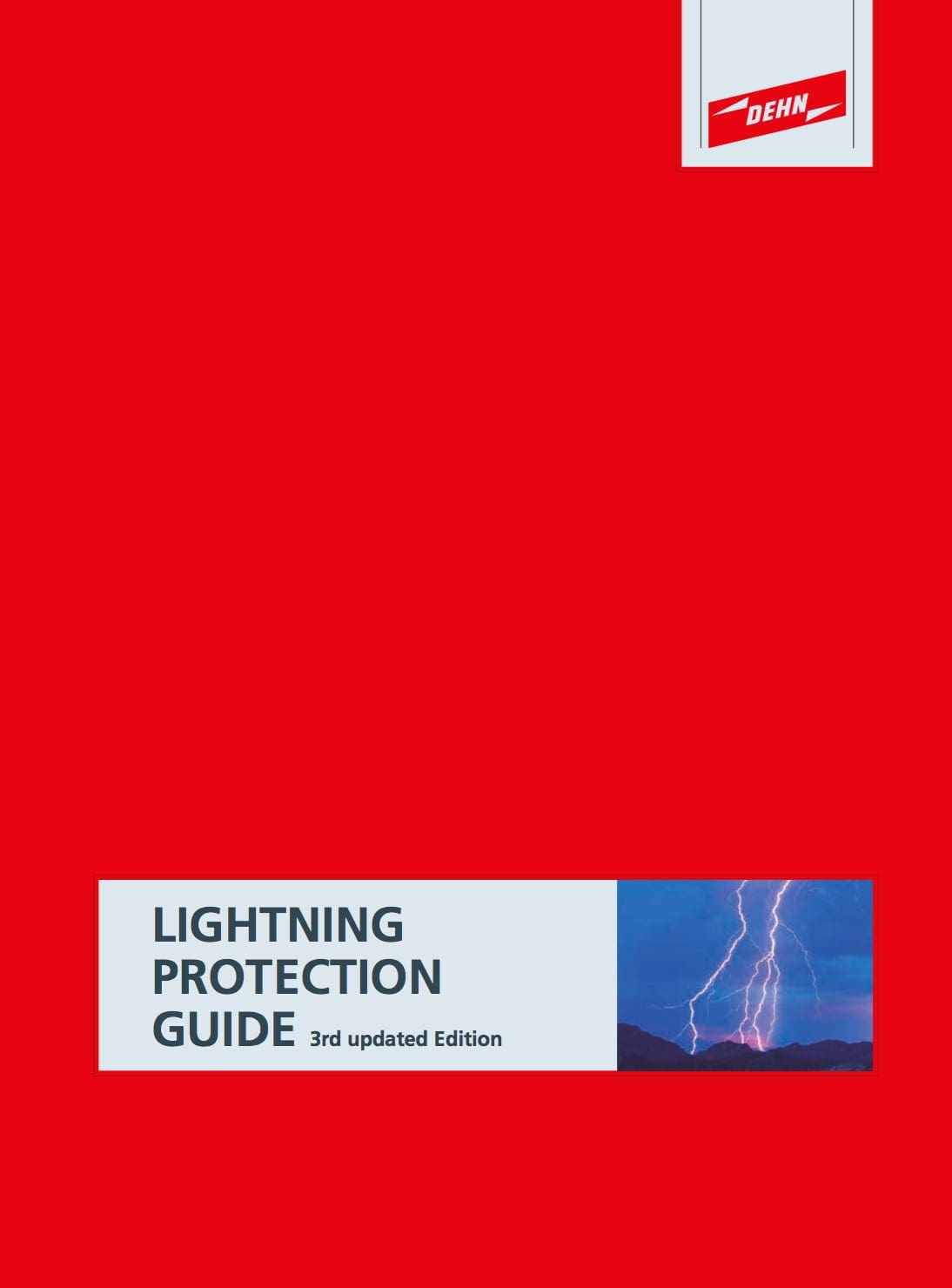Lightning protection system
The function of a lightning protection system is to protect structures from fire or mechanical destruction and persons in the buildings from injury or even death. A lightning protection system consists of an external and an internal lightning protection system (presented in Figure 1).

The functions of the external lightning protection system are:
- To intercept direct lightning strikes via an air-termination system
- To safely conduct the lightning current to the ground via a down-conductor system
- to distribute the lightning current in the ground via an earth-termination system

The function of the internal lightning protection system is to prevent dangerous sparking inside the structure.
Lightning equipotential bonding reduces the potential differences caused by lightning currents. This is achieved by connecting all isolated conductive parts of the installation directly by means of conductors or surge protective devices (SPDs) (Figure 2).

The four classes of LPS I, II, III and IV are determined using a set of construction rules including dimensioning requirements which are based on the relevant lightning protection level. Each set comprises class-dependent (e.g. radius of the rolling sphere, mesh size) and class-independent (e.g. cross-sections, materials) requirements.
To ensure permanent availability of complex information technology systems even in case of a direct lightning strike, additional measures, which supplement the lightning protection measures, are required to protect electronic systems against surges.
These comprehensive measures are described in chapter 7 (lightning protection zone concept).
| Title: | Lightning protection guide 2015 by DEHN + SÖHNE |
| Format: | |
| Size: | 16.0 MB |
| Pages: | 489 |
| Download: | Right here | Video Courses | Membership | Download Updates |



I am receiving a patent 05/24/2022 which actually prevents lightning strikes. No more lightning rods. I am on LinkedIn with details. Kevin Amsberry
I paid a visit to a small industry where most of the structures are constructed by steel plates and some iron sheets. But no LPS was installed. The area is not so prone to lightning but the rare cases in past have been fatal. Is this recommended, considering the structures n human operators therein?
Are lightning protection systems installed on all buildings. Are there parameters that would determine the need for a LPS?
I am located in Hawaii and it appears that our three hotel towers do not have a system installed. Lightning is rare in Hawaii, but just wondering if an LPS is required.
How do you decide LPS class or radius of sphere say for industrial installation.Say Ihave hihg mast of 30 mtr so which class I should select?
Building Height Below 23mtr need Class-1 LPS system
Building Height Over 23mtr need Class-2 LPS system
Sir,
Where should the lightening arrestors be located in a gas compressor plant?
I found several times the ground conductor for lightning protection passing throw a iron galvanized pipe. As the pipe around de conductor is ferromagnetic this increases the indutance.
Is this correct ?
Thanks
Mário